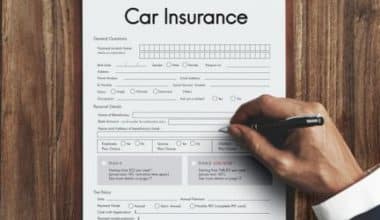Have you thought about whether to switch or renew your car insurance? It’s hard to say. There are times when it’s a good idea to shop around for insurance quotes, such as when your circumstances have changed, your premiums have increased, or you’ve purchased a new car. This guide discusses when and what to look for when renewing or switching car insurance.
How to Switch Car Insurance
It is simple to switch car insurance companies, and people do it all the time. However, you should check with your current insurer to determine if there are any cancellation fines. If you notify your insurance agent that you wish to cancel, they may offer to look for further savings or lower your cost. When you’re ready to start looking for new coverage, here’s what you should do:
#1. Compare Prices
The first step in switching car insurance companies is to shop around for a better cost. I recommend comparing rates from at least three different service providers. A quote comparison tool is an easy way to accomplish this. You need to enter your details once to see a variety of possibilities.
Consider suppliers who offer vehicle insurance savings to you when searching around. Even more, consider usage-based insurance or pay-per-mile packages to save money depending on your existing driving patterns.
Once you’ve narrowed your choices, research each firm so you can find out about their customer service and claims experience.
#2. Invest in a Solid Insurance Plan.
The next step is to purchase the new plan. If your current auto insurance policy is about to expire, make sure the new policy starts at least one day before the old one.
This will prevent a lapse in coverage. A one-day gap can raise your auto insurance costs in the future since insurance companies consider you an uninsured motorist during that period. Having two automobile insurance coverages for a single day is preferable to none.
However, if you’re changing companies in the middle of a policy period, arrange for the new coverage to start whenever you choose.
List your lender on your new policy if you have an auto loan or lease. If you still owe money and your automobile is tallied, the lender is a loss payee, which means it gets paid first. Additionally, if you have an auto loan, you’ll almost certainly require full coverage insurance, which covers collision and comprehensive coverage.
#3. Know when to Change.
When switching insurers, timing is significantly critical. When your current insurance is ready for renewal, this is the perfect time to do it because you will get the most value from your previous policy and not suffer cancellation fees. To prevent being without insurance, ensure your new policy begins immediately after your old one expires.
Cancel your insurance rather than renew it when the time comes and get a new one somewhere else instead.
#4. Obtain Proof of Insurance
The next step is to print or download an app to access your insurance ID card. Most states allow you to show a digital ID card if pulled over. Conversely, save it locally for offline access so you can access it whether or not you have cellular coverage.
#5. Inform Your Lender
Finally, if you have a car loan or lease, you must notify the lender of your new insurance coverage immediately. Since your lender was named on your prior auto insurance, your old business will notify your lender of the termination.
Moreover, you should have put your lender on the new vehicle insurance policy, but it’s also a good idea to phone the lender to ensure that it’s up to date on all of the facts of your new coverage.
Switch Car Insurance Mid-Policy
Don’t forget about insurance when you’re shopping for a new car. If you change cars while your current policy is still in effect, you must update your coverage before driving away on your new wheels.
Almost all insurance companies will let you transfer your policy from one vehicle to another. Even though regular auto insurance is valid for 12 months, you can modify your coverage at any time. It is a relatively straightforward procedure, and your upgraded policy will protect you until your current renewal date. Nonetheless, be aware that you may be charged a fee to cover administrative charges, and your new automobile may alter the cost of your insurance.
Once you’ve agreed to buy the car, notify your insurance provider of the day you plan to complete the transaction and begin driving it. On the other hand, they will then schedule the start date of your new policy. On the day of the transfer, the cover on your new car will begin as soon as you start driving it, and the cover on your old vehicle will terminate as soon as you exit it.
If you buy from a dealership, you may be provided with temporary auto insurance for a few days to tide you over until you can arrange long-term coverage. Meanwhile, double-check ahead of time to ensure it. In that case, you’ll need auto insurance before possessing the vehicle.
If you buy from a private seller, you must have insurance before picking up the automobile. Try to schedule the switchover at least a day before collection. If you still have your old car, you must insure it until you dispose of it. In this instance, you must obtain new or temporary coverage for your new vehicle.
Risks of Switching Insurance Companies
If you’re considering switching insurance companies, it’s generally because you want to improve your financial situation.
You could be considering canceling an insurance policy. Undoubtedly, you wish to upgrade your coverage due to new medical needs, changes in driving habits, or a move to a new home.
These are all reasonable motivations.
In fact, it’s a good idea to keep your health, safety, and retirement goals in mind when reviewing your insurance coverage—whether for a car, a home, or your own life.
Here are some risks to be aware of when switching insurance companies:
#1. Terms and Conditions
Premium costs generally rise with age, so starting a policy with a new provider when you’re older may result in you paying more. Consider the tax implications of various programs. You might consider moving to a term, whole life, or other life insurance policy with your present provider, but this has its own set of drawbacks.
#2. Possible Coverage Gaps
Many businesses use similar insurance language and provide the same coverage options. Indeed, some are titled differently, while others are genuinely different. This is when an insurance agent’s knowledge can come in handy. Check that your new policy provides the same coverage as your old one. If your coverage is changing, be sure you understand how. Finally, you should feel at ease with any modifications.
Insurance companies frequently revise their policies. Often, older policies provide more comprehensive coverage and lower premiums. Now consider recent policies. They generally limit coverage for superficial damages to vehicles or homes. This is why it is worthwhile to investigate providers’ ‘real cash value’ policies.
#3. Loyalty and Claim Benefits Loss
This is another instance of a potential downside. With your current vehicle insurer, you may be entitled to loyalty incentives such as accident or claim forgiveness. Because of your duration, you may have earned specific discounts. These benefits may persuade you to stick with your existing insurer. Switching may only make sense if you receive a much lower price for the same coverage from a trustworthy insurer.
#4. Re-Switching Fees
Consider how much time you’ve spent with your current insurance. Most insurance companies will ask how long you have been with your previous employer. You are unlikely to get the best prices if it takes less than two years. Your term with your previous insurer is a rating factor for several competitors.
See: BEST & AFFORDABLE CAR INSURANCE IN LAS VEGAS 2023
This is another issue to consider while switching life insurance policies. You may be required to repeat a medical examination. This exam’s results may impact your eligibility for new policies. Then there’s what’s known as an “incontestability clause.” It means a provider can challenge your death benefit within the first two years of your coverage.
Do I Need to Cancel My Car Insurance Before Switching?
Basically, you should cancel your coverage with your prior insurer when switching car insurance companies. Although your new insurance company can show proof of coverage to your old company if needed, they mostly can’t cancel your policy with another company.
Can You Save Money by Switching Car Insurance?
According to a 2022 ValuePenguin analysis, 26% of policyholders save $200 or more annually when switching to a new provider. Call a few insurance companies and get quotations; you surely might be able to find an excellent rate.
Should I Switch From Geico to Progressive?
Geico and Progressive both provide low-cost auto insurance to drivers around the country. Geico’s premiums are usually lower overall, although Progressive offers reduced rates to high-risk drivers. Drivers with a recent DUI, at-fault collision, or speeding citation are considered high-risk.
What Should I Know When Changing Insurance Companies?
As you narrow down your selections, read the coverage information for each policy you consider. While a new plan may be less expensive, it may have fewer advantages than your previous coverage.
Before switching providers, be sure you understand what is covered, as well as deductibles, limits, and additional benefits.
See: WHY IS CAR INSURANCE SO EXPENSIVE? Detailed
Is It Risky to Change Insurance Companies?
No!
Switching auto insurance is not harmful and will not result in penalties or damage to your credit score. Drivers are rarely charged cancellation costs, even if they cancel in the middle of a policy. While switching vehicle insurance carriers in the middle of a term can be inconvenient, there are no adverse penalties.
How Often Can You Make Changes to Your Insurance?
Can I switch health insurance plans after open enrollment? Most health insurance policies can only be purchased or updated during the annual open enrollment. However, if certain qualifying life circumstances occur, you may be qualified for a particular enrollment period.
Car insurance companies with the lowest rates
- Geico is the best overall.
- Auto-owners are the best option for minimum coverage.
- Amica is the best in terms of client satisfaction.
- USAA is the best option for service members and veterans.
Why Is Progressive Insurance Better?
Progressive provides coverage options other carriers do not, such as rideshare and gap insurance. It further offers free coverage for veterinary fees if a pet is hurt in a car accident. This coverage is only offered to clients who purchase collision insurance.
Conclusion
Switching car insurance policies isn’t as tough as it seems. Follow a few simple steps to ensure you make the correct decision. Subsequently, contact your existing insurance carrier to learn about its specific fees and switching process. Switching to a firm that works better for you could save you money.
- HOW DOES A BUSINESS LOAN WORK? All You Should Know
- HAZARD BUSINESS INSURANCE: What Is It & Why You Need It?
- BEST MODIFIED CAR INSURANCE COMPANIES 2023






